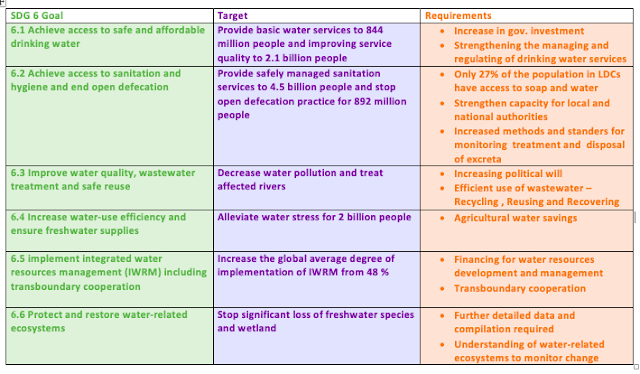AFRICA'S CHOLERA CRISIS
Welcome to my penultimate blog which will be discussing the tragedy of cholera in Africa. The provision of safe water and sanitation is critical in avoiding the transmission of cholera and waterborne diseases. The most recent cholera pandemic reached Africa in 1971, the cause of the spread was a result of (Mengel et al. 2014):
Prevention
- A lack of clean water and poor sanitation standards
- Contamination of human water and food sources
- Climate and extreme weather
- A political and financial crisis
- High population density and poorly structured informal settlements
- Poor hygiene practices
 |
| Figure 1: Bar Graph to show WHO reported cholera cases by year and continent between 1989-2016. Source: WHO,2016 |
What is Cholera and How did it Spread?
Cholera is an infectious disease which causes severe watery diarrhoea (also referred to as rice-water stool) which leads to dehydration and death within hours. The symptoms of cholera include diarrhoea, nausea, vomiting and severe dehydration. Those most susceptible to the developing the diseases are people with low immunity - in particular, low malnourished children or those with HIV (WHO Africa, 2017). The flowchart shown in Figure 2 demonstrates how the spread of cholera occurred in Africa:
 |
| Figure 2: A flowchart to show the driving forces for cholera outbreaks in Africa Source: Mengel et al., 2014 |
The flowchart shows that initial transmission is caused by contamination in reservoirs and infected migrants and the expansion of the epidemic was the usage of this water in drinking and food. This is echoed by Naidoo et al., 2002 paper on Africas cholera outbreak, the study illustrates that the most common source of infection was faecally contaminating surface water or during storage, as well as improperly prepared food. Exarbatated by rapid population growth and a lack of water sanitation through piped water systems and hygiene promotion all lead to the spreading of cholera (Naidoo et al., 2002).
Prevention
The Prevention of the cholera outbreak was the use of basic and safely managed drinking water services. However, in 2015 663 million people were drinking unimproved sources - the primary percentage of these people were in Sub Saharan Africa (World Bank, 2015). Several campaigns were used across Africa to promote hygiene promotion and educate locals on the causes of cholera. The below video is a campaign created by UNICEF in Ghana, the video informs people to ensure they boil and filter their water, eat hot food and keep their water and food covered. Other sources of campaigning and awareness were done on Twitter with the hashtag #EndCholera this has been used by the Gates Foundation, BBC News, WHO and UNICEF to bring awareness of the severity of the issue.
Although treatment was created through the oral cholera vaccine, this was only seen as a short-term solution and the investment in improving water sanitation and hygiene as the long-term solution (Montgomery et al, 2018). A case study looking at Zambia supports this theory. A recent outbreak of cholera in 2017 caused 5000 cases and resulted in 100 deaths in Zambia. The initial response by the government was a door to door hygiene promotion, hygiene kit distribution and enhanced water quality testing (Montgomery et al, 2018). This response had been proven successful alongside the use of the oral cholera vaccine. The Global Task Force on Cholera Control has action plans and investment discussion surrounding the target of reducing cholera deaths by 90% by 2030 (WHO, 2017).
Overall it is clear that the need for access to safe water and sanitation is crucial in addressing quality of life and reducing the risk of cholera. A solution to the problem is the improved water usage across Africa as well as hygiene promotion alongside the use of oral vaccination. This solution, however, must be accelerated and supported financially in order for it to become effective. Those most vulnerable are the people living informal settlements who do not have the provision of safe water and knowledge to avoid such outbreaks. This reiterates the phrase used by UN that access to water is an essential human right urgency is needed to #EndCholera.
Overall it is clear that the need for access to safe water and sanitation is crucial in addressing quality of life and reducing the risk of cholera. A solution to the problem is the improved water usage across Africa as well as hygiene promotion alongside the use of oral vaccination. This solution, however, must be accelerated and supported financially in order for it to become effective. Those most vulnerable are the people living informal settlements who do not have the provision of safe water and knowledge to avoid such outbreaks. This reiterates the phrase used by UN that access to water is an essential human right urgency is needed to #EndCholera.


Hi - I really enjoyed this blog having looked at health in a module during second year! In my own research on sanitation it is clear that many governments feel that these most vulnerable informal settlements are 'stateless locations', with governments not feeling they need hold a responsibility to these illegal settlements. Have you come across any success stories of vaccinating these informal settlements that overcome these issues?
ReplyDeleteHello! Thank you for your comment! There are many short term success stories of the vaccination used across Africa, as oral vaccination can be implemented faster than better sanitation or water access. WHO reports a success story in Zambia where between 9 and 25 April 2016, 424 100 vaccine doses were administered to an estimated combined target population of 578 043, giving an estimated administrative coverage of 73.4%. The success was resulted in mass campaigning informing the locals of the benefits of the vaccine as well as the necessity. Additionally quick decisions and planning such as strategic vaccination sites was more efficient and cheaper strategy than house-to-house visits.
Delete